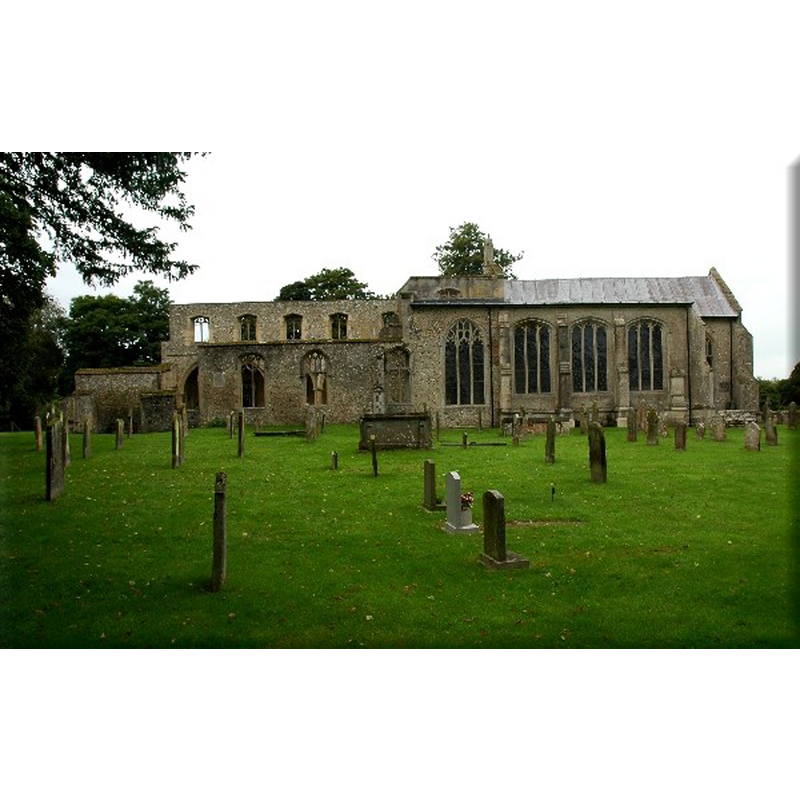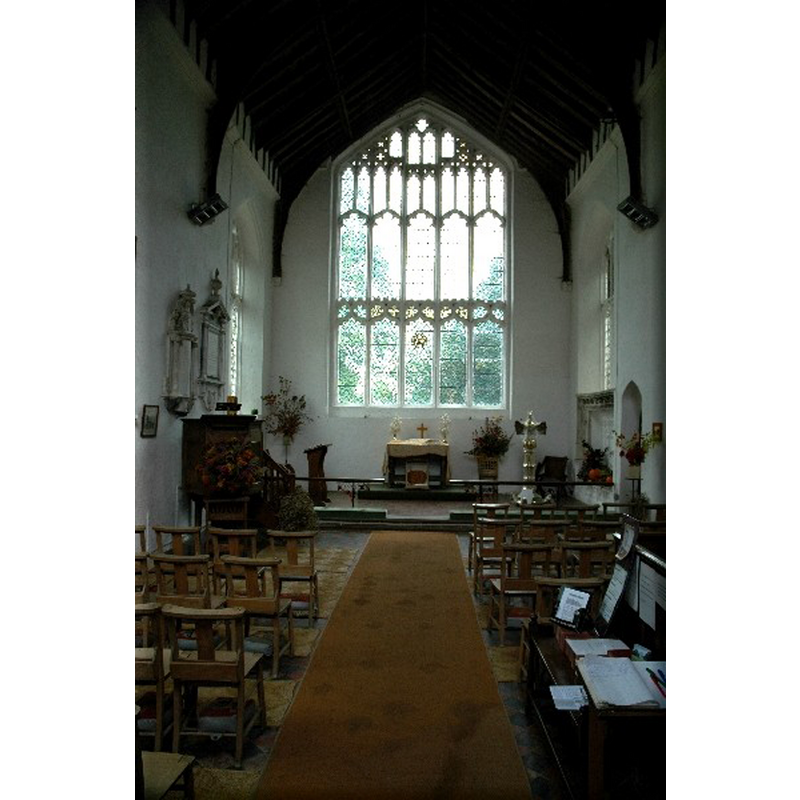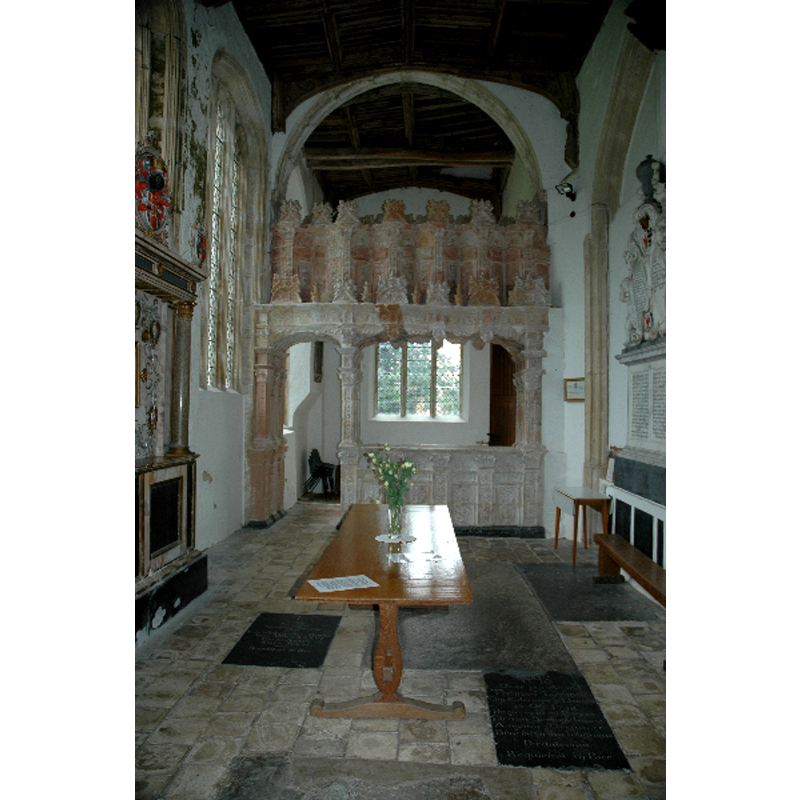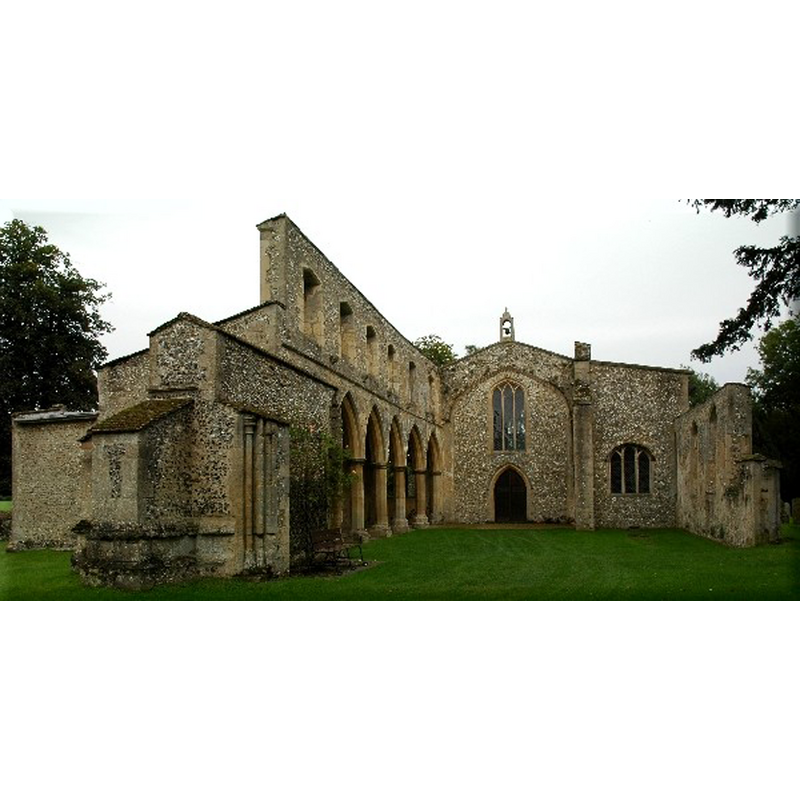Oxborough No. 2 / Oxburgh / Oxenburh
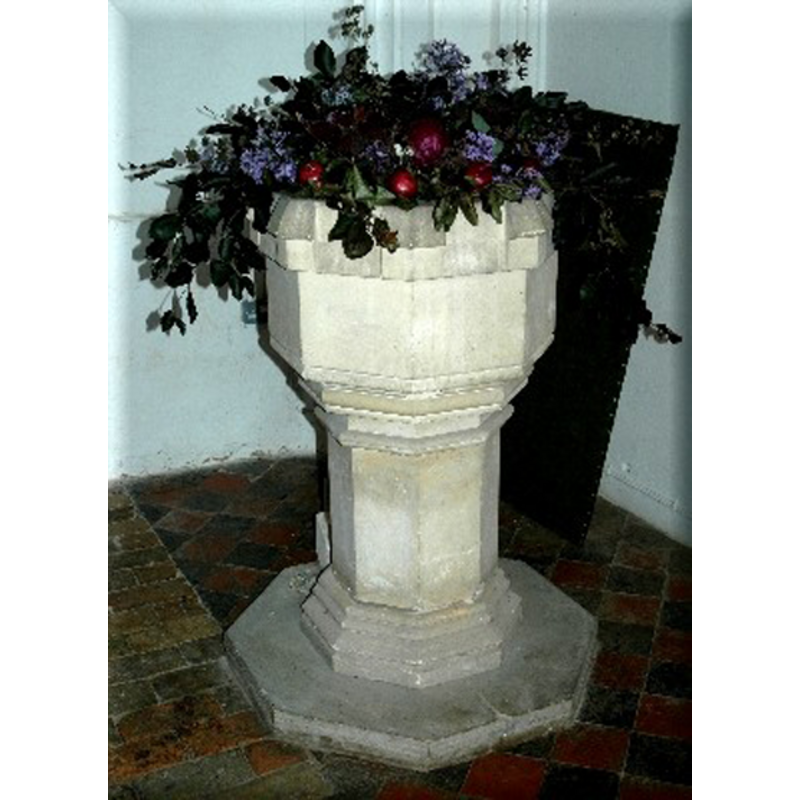
Image copyright © Mark Collins, 2005
Standing permission
Results: 8 records
view of church exterior - northeast view
Scene Description: photograph of the church hanging inside the present building; shows the church as it was before the fall of the tower in 1948
Copyright Statement: Image copyright © Mark Collins, 2005
Image Source: digital image by Mark Collins of an old picture [www.roughwood.net/ChurchAlbum/Norfolk/Oxborough/OxboroughStJohn2005.htm] [accessed 14 August 2009]
Copyright Instructions: Standing permission
view of church exterior - south view
Scene Description: tower-less since 1948 -- never re-built
Copyright Statement: Image copyright © Mark Collins, 2005
Image Source: digital photograph by Mark Collins [www.roughwood.net/ChurchAlbum/Norfolk/Oxborough/OxboroughStJohn2005.htm] [accessed 14 August 2009]
Copyright Instructions: Standing permission
view of church interior - chancel - looking east
Scene Description: the former chancel, now serving as nave of the shortened church
Copyright Statement: Image copyright © Mark Collins, 2005
Image Source: digital photograph by Mark Collins [www.roughwood.net/ChurchAlbum/Norfolk/Oxborough/OxboroughStJohn2005.htm] [accessed 14 August 2009]
Copyright Instructions: Standing permission
view of church interior - chancel - looking west
Scene Description: the former chancel, now serving as nave of the shortened church -- the wall at the far end replaced the old chancel arch
Copyright Statement: Image copyright © Mark Collins, 2005
Image Source: digital photograph by Mark Collins [www.roughwood.net/ChurchAlbum/Norfolk/Oxborough/OxboroughStJohn2005.htm] [accessed 14 August 2009]
Copyright Instructions: Standing permission
view of church interior - chapel
Scene Description: the Bedingfield chapel, on the south side of the chancel, with its terracotta tombs
Copyright Statement: Image copyright © Mark Collins, 2005
Image Source: digital photograph by Mark Collins [www.roughwood.net/ChurchAlbum/Norfolk/Oxborough/OxboroughStJohn2005.htm] [accessed 14 August 2009]
Copyright Instructions: Standing permission
view of church interior - nave - looking west
Scene Description: the former nave open to the skies since the collapse of the tower in 1948 -- inever re-built
Copyright Statement: Image copyright © Mark Collins, 2005
Image Source: digital photograph by Mark Collins [www.roughwood.net/ChurchAlbum/Norfolk/Oxborough/OxboroughStJohn2005.htm] [accessed 14 August 2009]
Copyright Instructions: Standing permission
view of font and cover
Scene Description: the present font [cf. FontNotes]
Copyright Statement: Image copyright © Mark Collins, 2005
Image Source: digital photograph by Mark Collins [www.roughwood.net/ChurchAlbum/Norfolk/Oxborough/OxboroughStJohn2005.htm] [accessed 14 August 2009]
Copyright Instructions: Standing permission
INFORMATION
FontID: 12780OXB
Object Type: Baptismal Font1
Church/Chapel: Parish Church of St. John the Evangelist
Church Patron Saints: St. John the Evangelist
Country Name: England
Location: Norfolk, East Anglia
Directions to Site: Swaffham Road, Oxborough, Norfolk PE33 9QD
Ecclesiastic Region: [Diocese of Norwich]
Historical Region: Hundred of South Greenhoe
Font Location in Church: [cf. FontNotes]
Century and Period: 14th century, Decorated
Cognate Fonts: [cf. FontNotes]
Credit and Acknowledgements: We are grateful to Mark Collins, of www.roughwood.net, for his photographs of the church and modern font at St. John's
Church Notes: "St John's is primarily a Perpendicular Gothic church. The first thing you notice about the building is that there is no tower, only a small bellocote. The original spire was struck by lightning in the 19th century and was rebuilt, only to collapse in 1948, pulling the tower and nave down as it fell. The nave was never rebuilt, and today it stands roofless, open to the sky. The north aisle is roofed, but the arcading is open to the side. The current church consists of only the original chancel and Bedingfield chapel. " David Ross [www.britainexpress.com/attractions.htm?attraction=4476] [accessed 16 May 2013]
Font Notes:
Click to view
Blomefield (1805-1810) writes: "O[xburgh], In Domesday Book, is called Oxenburgh [...] The church of Oxburgh is dedicated to St. John the Evangelist; it is a large and regular edifice consisting of middle, north, and south isles, in length from the west door to the chancel about 88 feet, and including all the isles, in breadth about 53 feet; the chancel is about 46 feet long, and 21 broad, the whole is of flint-stone, &c. covered with lead, and seems to have been founded about the reign of King Edward I [i.e., 1272-1307]. At the west end stands a foursquare tower of curious workmanship of flint, with quoins and battlements of free-stone, on this is raised a lofty octangular spire all of free-stone throughout, the whole being 150 feet in height. In this tower hang five musical bells [...] Henry de Hastings [...] occurs rector in the 57th of Henry III. and in the 14th of Edward I. one of the same name was rector of Stratford on Avon in Warwickshire in 1316; and the lord and patron of this town being of that county, it is probable he was one and the same person." Tyrrell-Green (1928) notes a group of fonts in which "the geometrical or curved tracery occurs, not exactly in the same form as in the windows of the style, but adapted so as to fill square panels upon the sides of an octagonal font. The fashion is most common in Norfolk, in which county there are proportionately a greater number of fonts of this period than elsewhere. Excellent examples occur at Bintry [...], Deopham, Hilborough, Oxborough, Rockland All Saints', Sheringham, and Thompson--all in Norfolk. Other good specimens of the same kind of treatment are at Barton Mills (Suffolk), Kingsworthy (Hants), and Strubby (Lincs)." Tyrrell-Green (ibid.) does not name the church in Oxborough, but the Roman Catholic Chapel of Our Lady and St. Margaret is in the grounds of Oxburgh Hall does not appear to have an early font, of the Church of St. Mary Magdalene, of Norman origin, only a couple of walls survive, and the font at the remains of St. John's is a modern one; though not corroborated anywhere we could find, the 14th-century font appears to have been destroyed when the tower on St. Johns fell onto the nave.
COORDINATES
Church Latitude & Longitude Decimal: 52.58225, 0.57294
Church Latitude & Longitude DMS: 52° 34′ 56.1″ N, 0° 34′ 22.58″ E
UTM: 31U 335564 5828568
MEDIUM AND MEASUREMENTS
Material: stone
Font Shape: octagonal (mounted)
Basin Interior Shape: round
Basin Exterior Shape: octagonal
REFERENCES
Blomefield, Francis, An essay towards a topographical history of Norfolk, 1805-1810
Tyrrell-Green, E., Baptismal Fonts Classified and Illustrated, London: Society for Promoting Christian Knowledge: The Macmillan Co., 1928
![on the dstroyed font [cf. FontNotes]](/static-50478a99ec6f36a15d6234548c59f63da52304e5/others/image_not_available.jpg)
![on the dstroyed font [cf. FontNotes]](/static-50478a99ec6f36a15d6234548c59f63da52304e5/bsi-testing-site/others/image_not_available.jpg)

